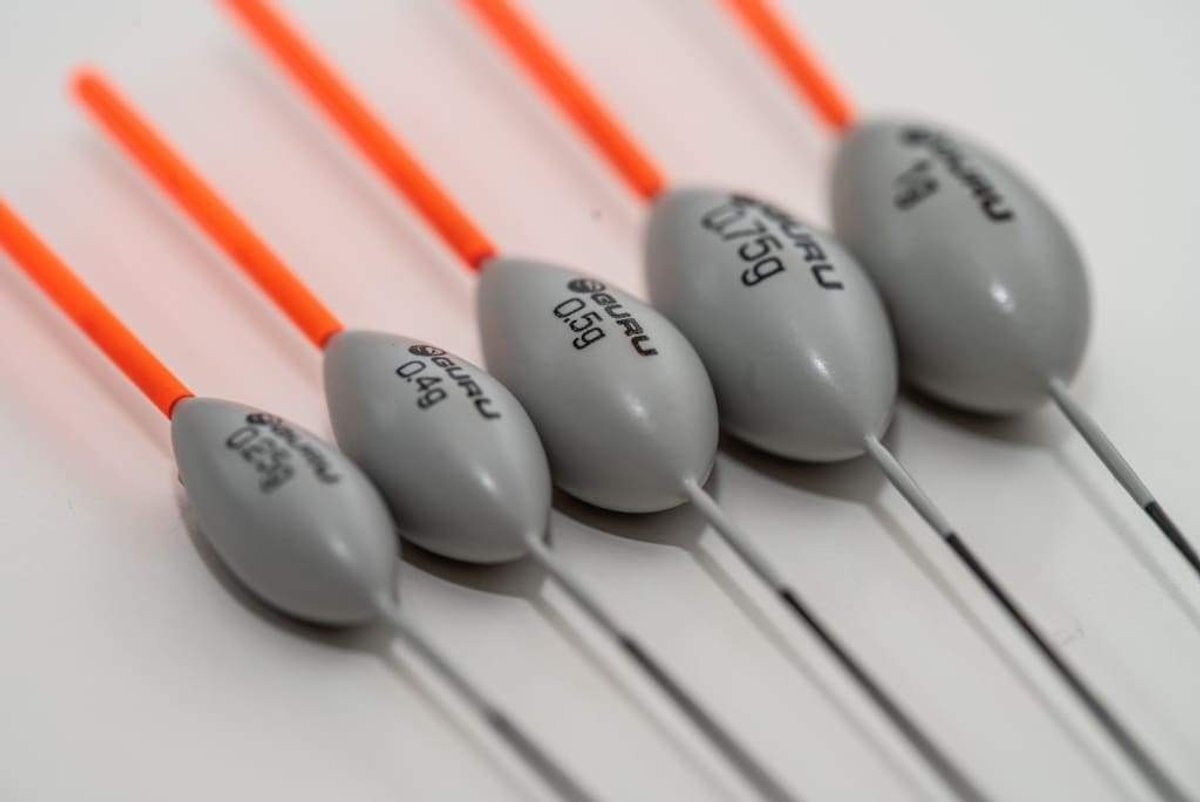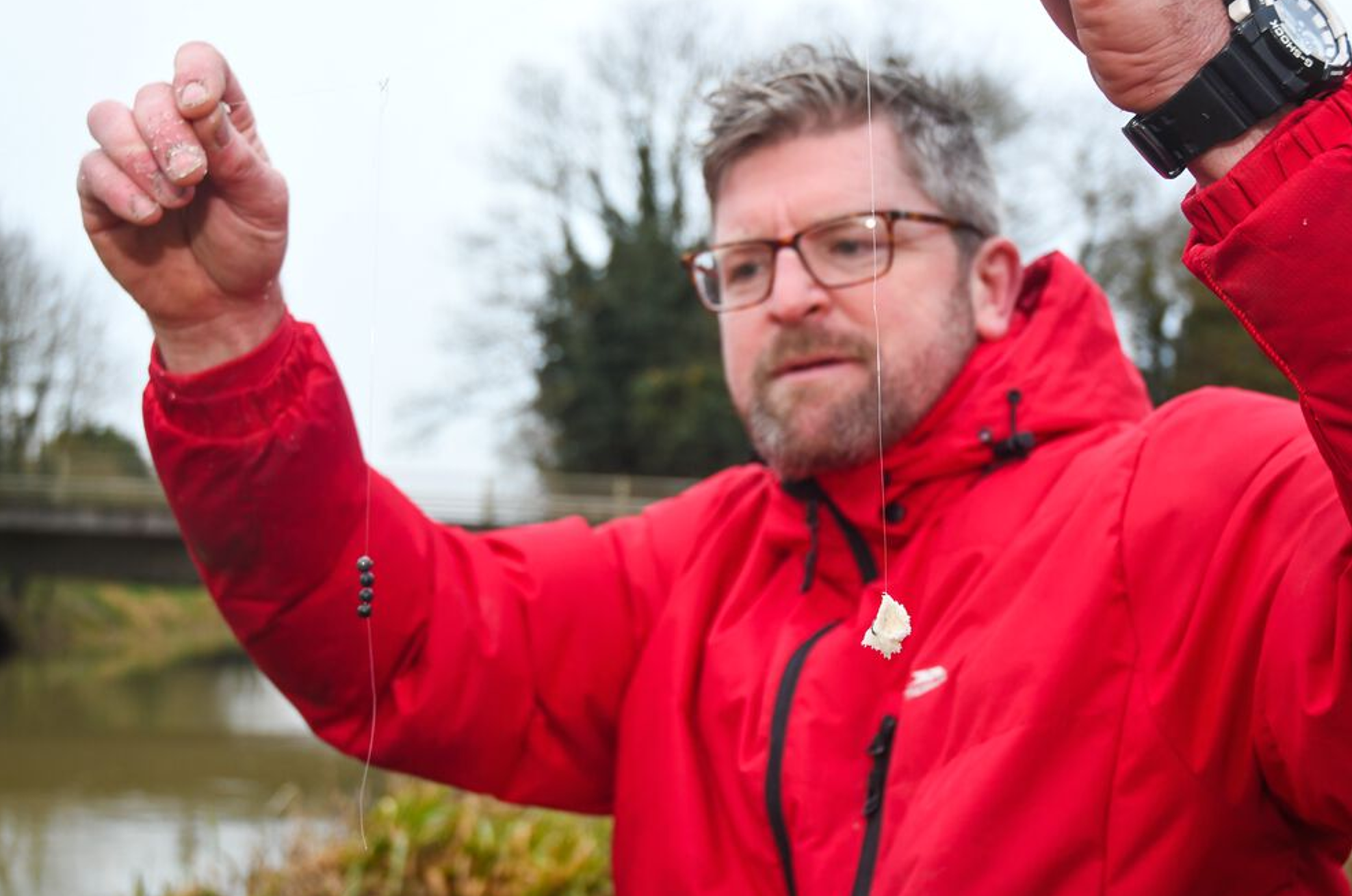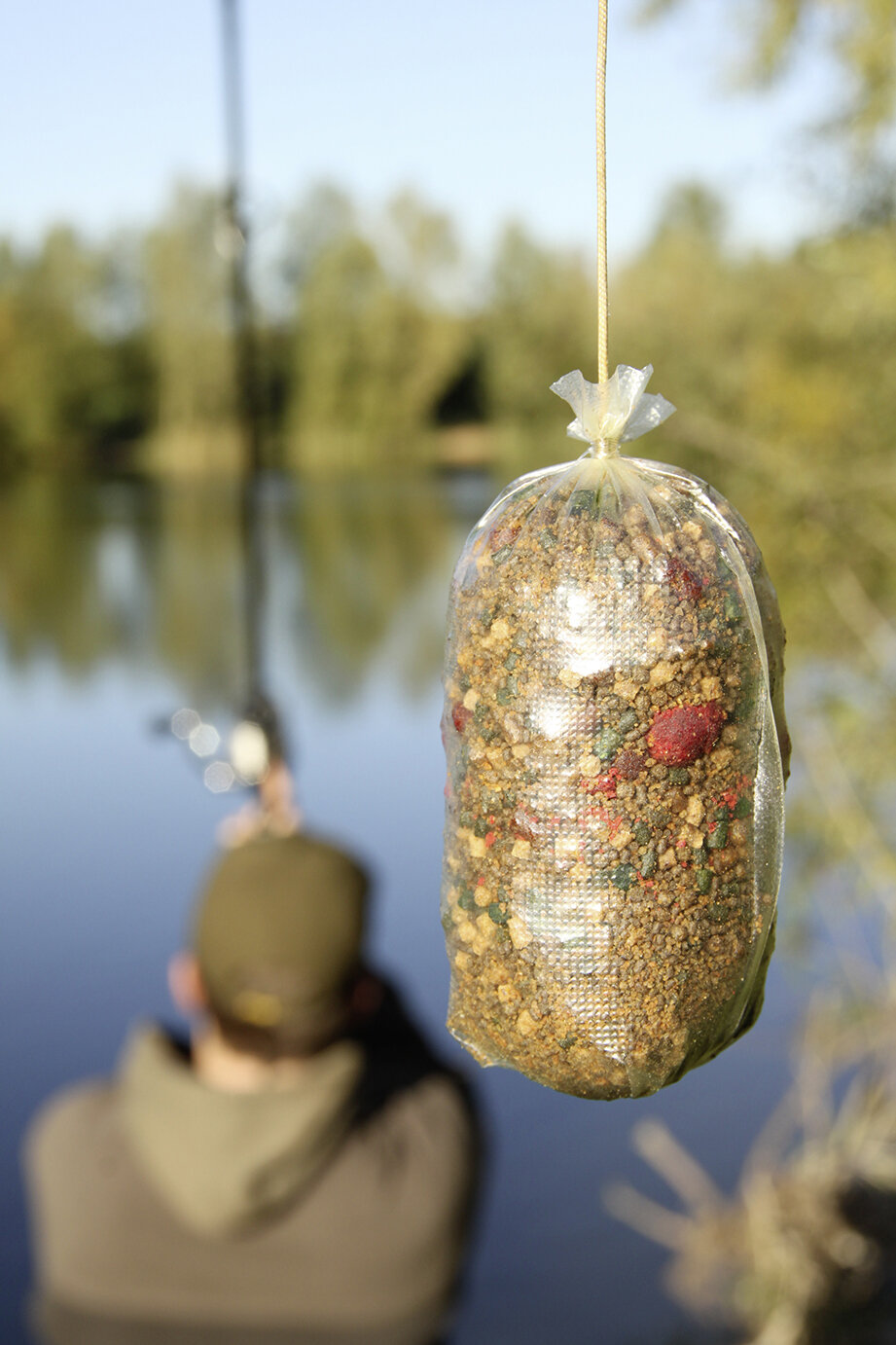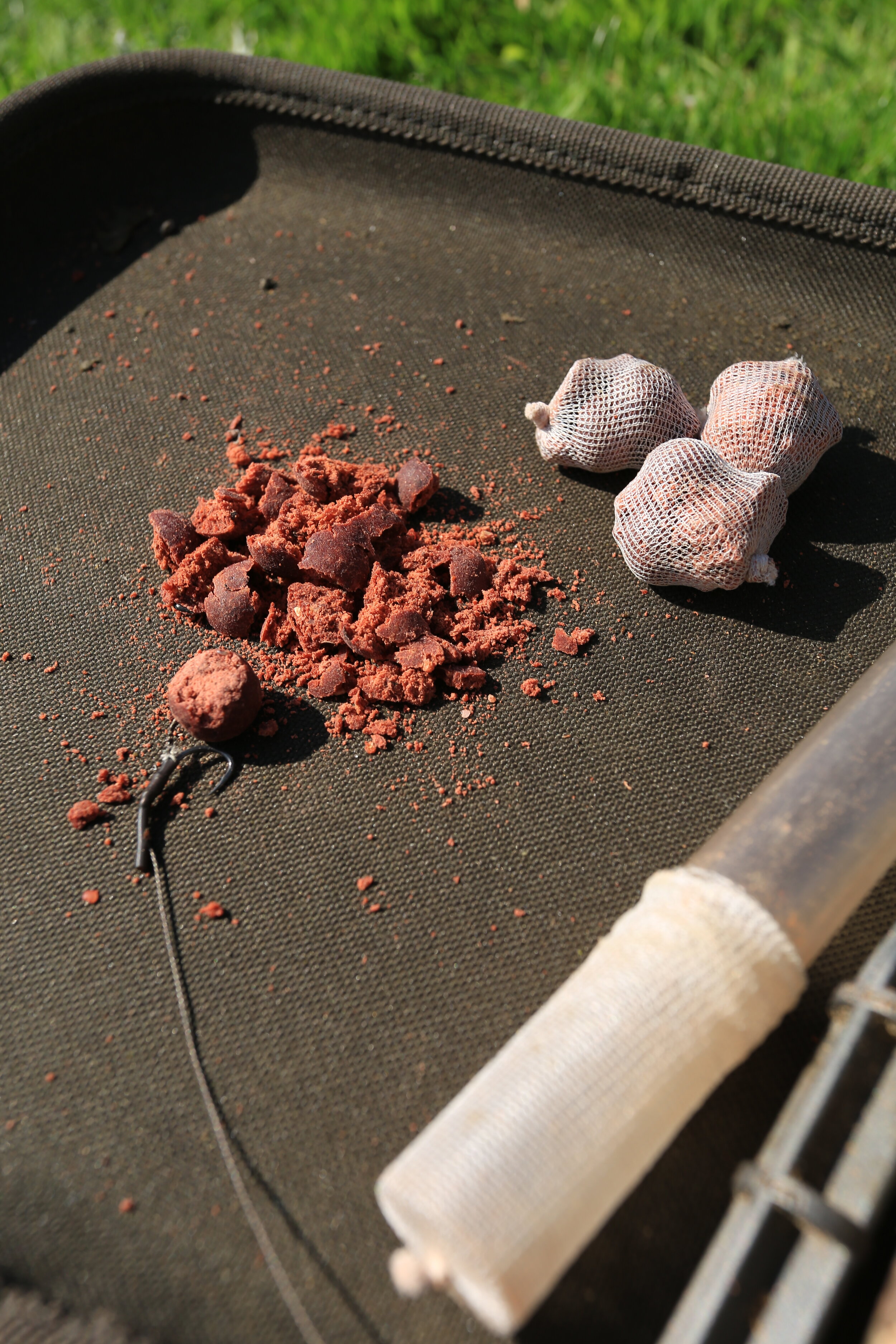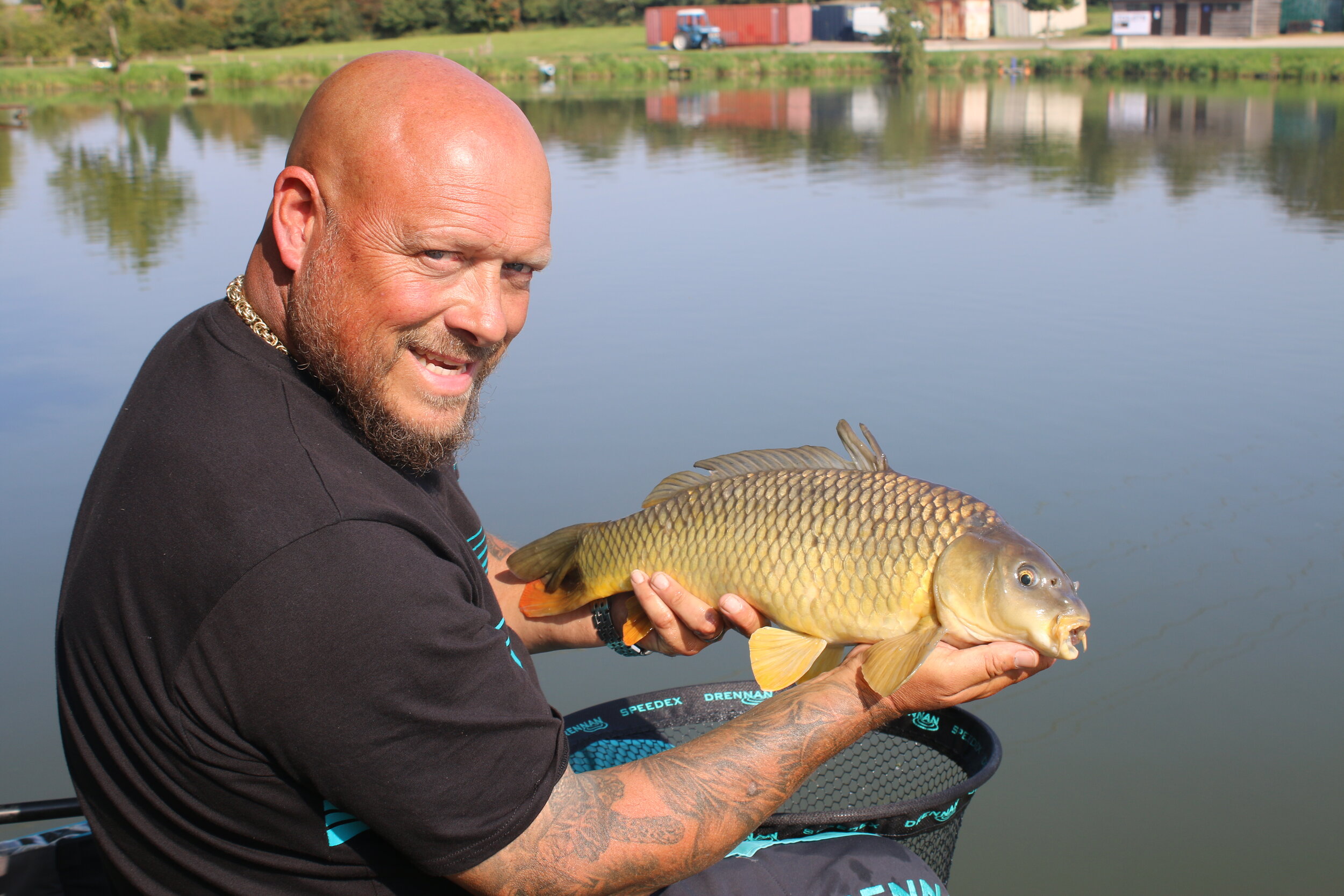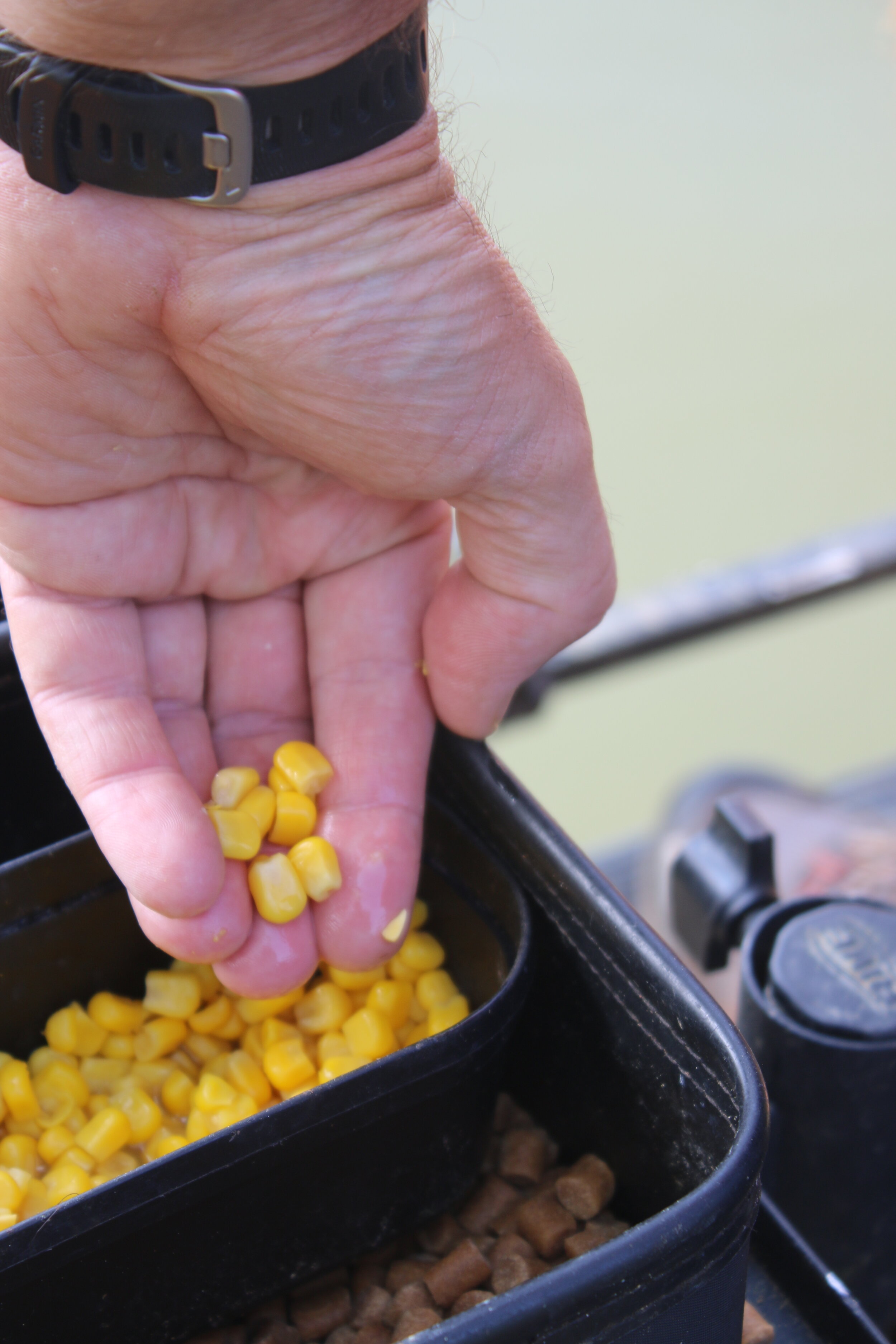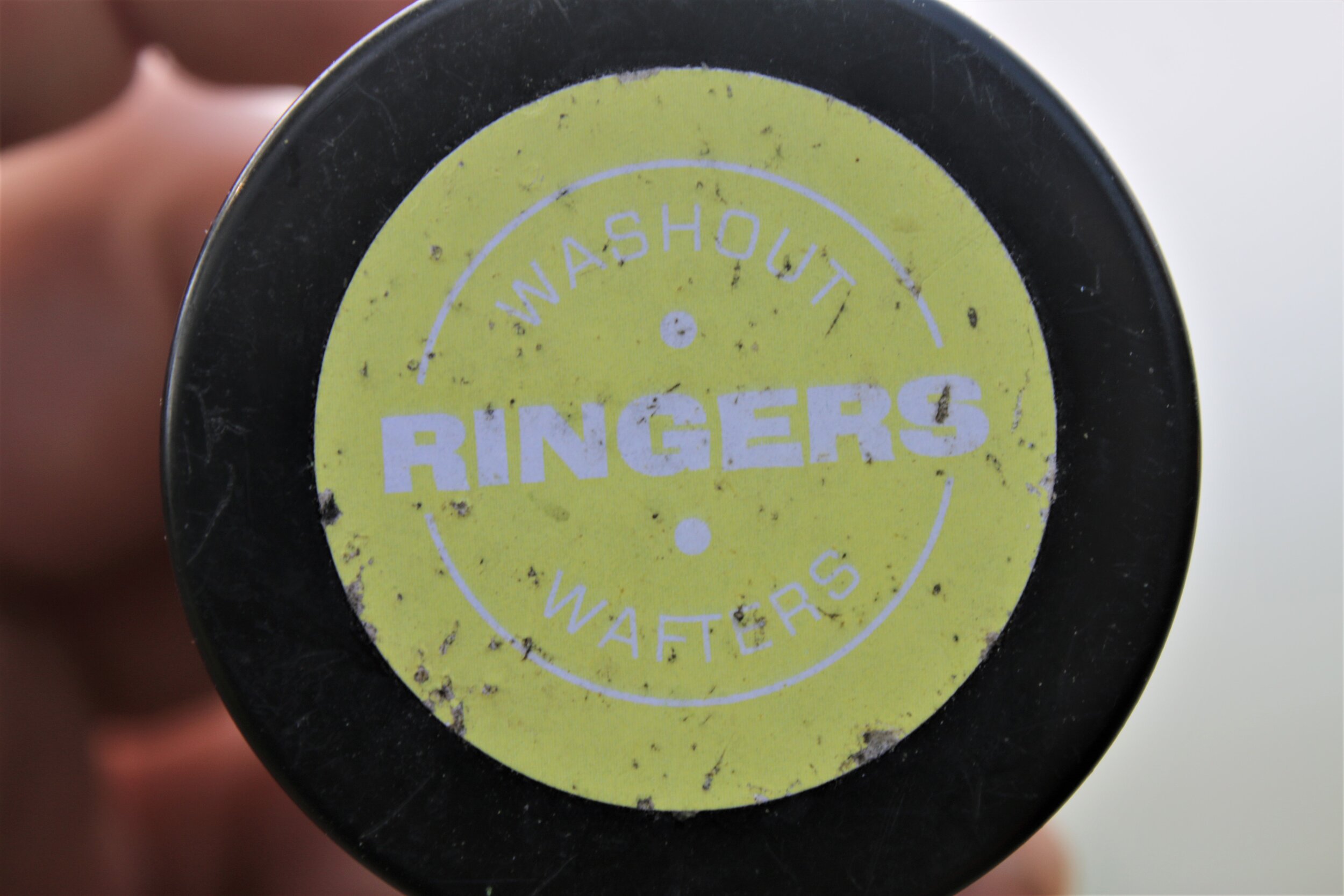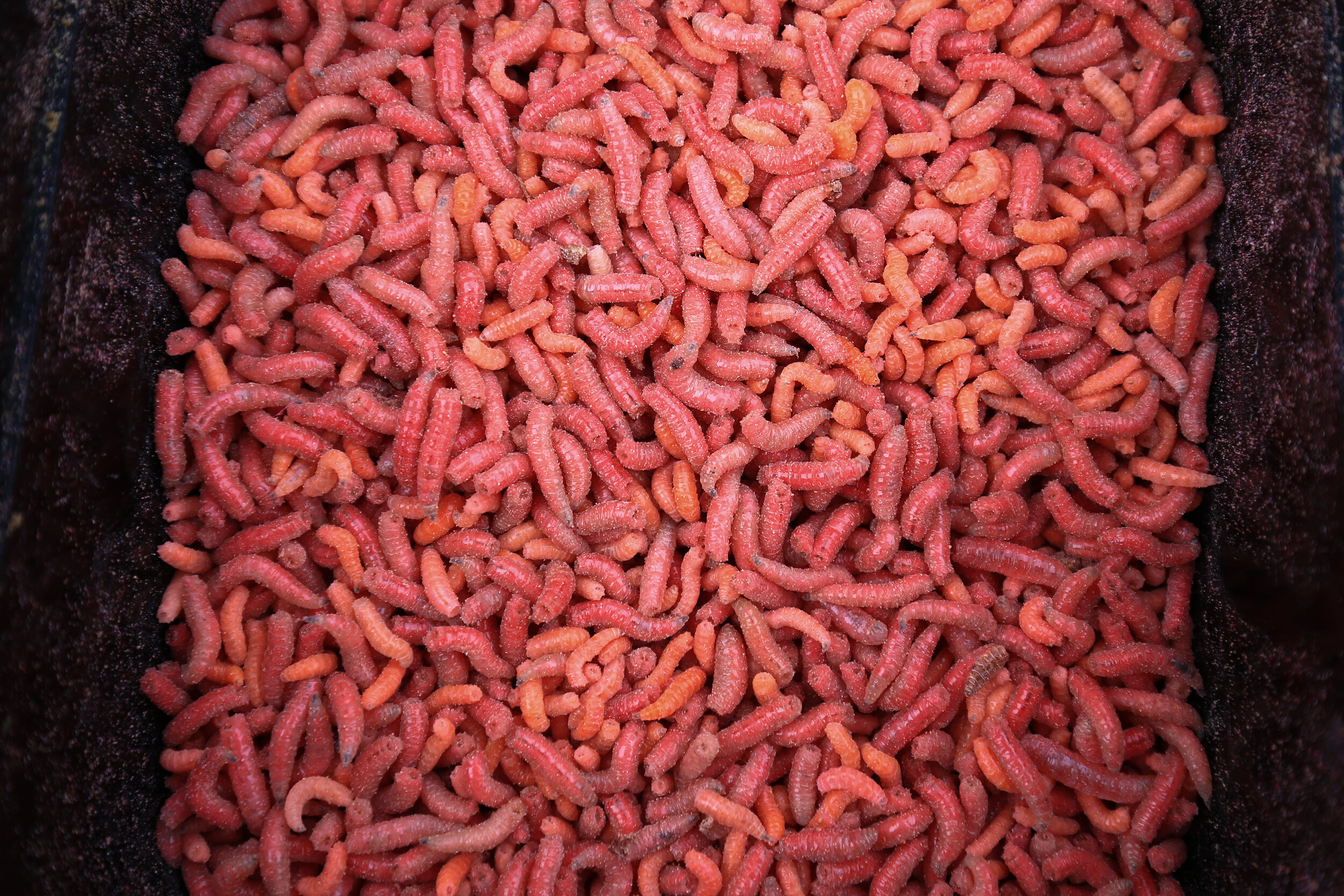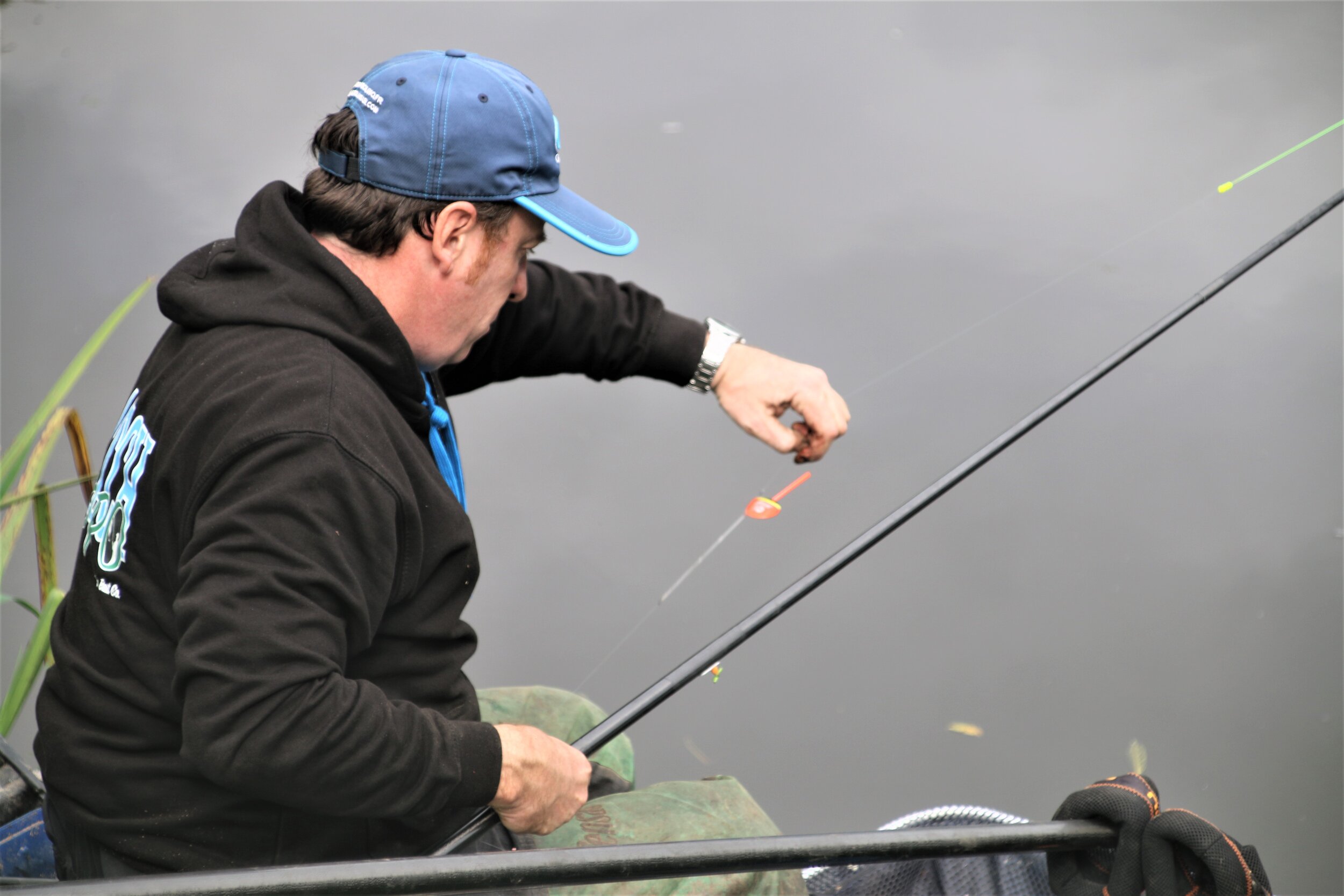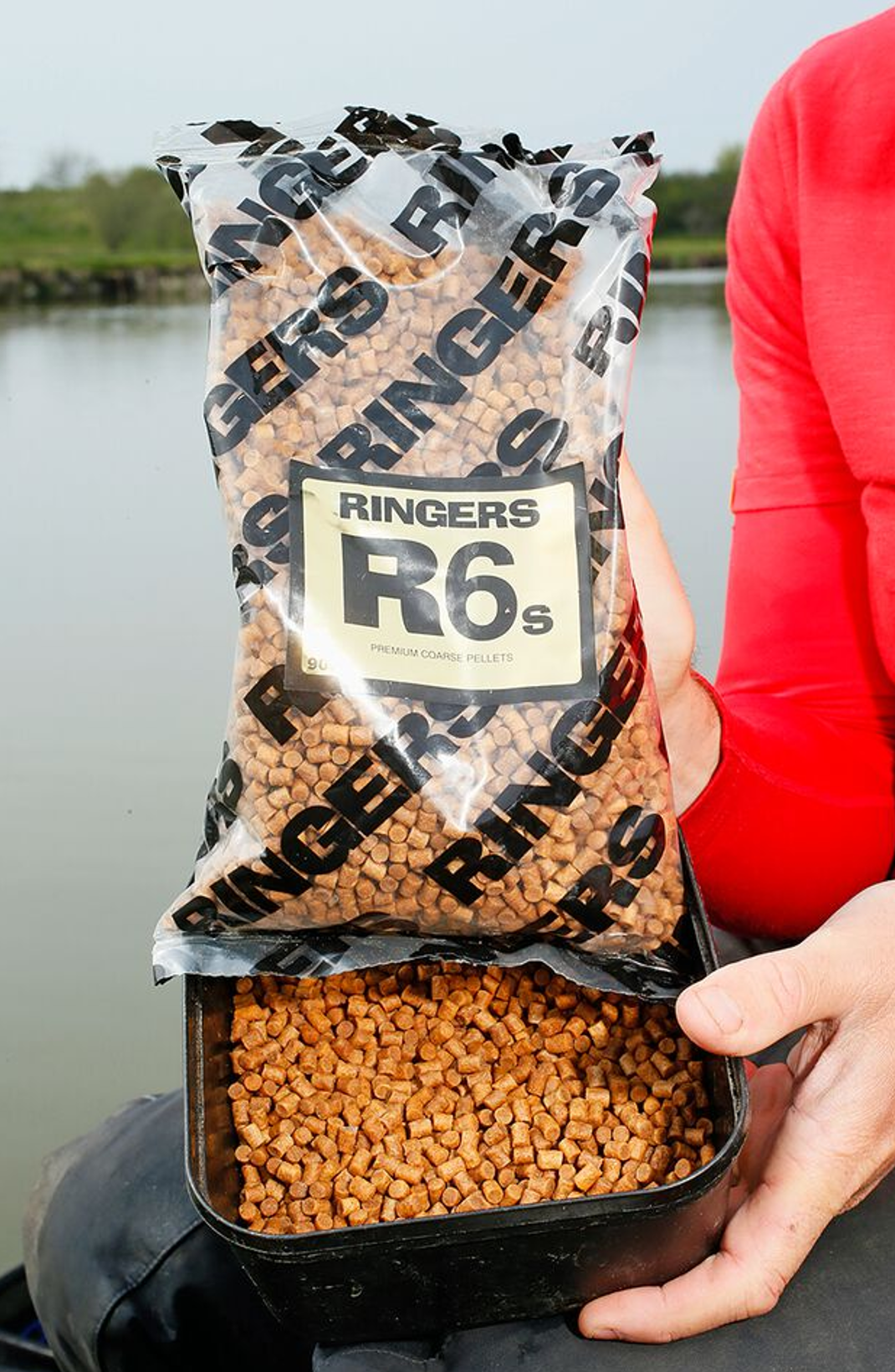River Fishing Tips | 5 tips for stick float fishing
A winner on running water in autumn, this versatile float always has the knack of catching better fish…
Hemp & caster
Maggots are fine for small fish, but when quality is on the cards, it’s hard to see past hemp and caster for feed. Chub, barbel and big roach love them, and they’re baits that sink relatively quickly.
Each bait does a different job, though, the hemp getting to the bottom quickly to keep the fish in the peg while casters fall slightly slower and will draw fish from downstream. A ratio of 75 per cent hemp to 25 per cent casters is about right, using maggot on the hook to begin with and then changing to caster as the fishing improves.
For quality fish, choose hemp and caster
Find a spot with smooth water
If you have a peg with some erratic flow that’s got water swirling and boiling all over the place it will be impossible to get the bait to run down the same place every time, and that will make it impossible to concentrate the fish in one area.
You need a spot with a steady glide to allow you to run the float through the same spot every time, enabling you to build up the area with loosefeed and get the fish hunting for bait. Take time to study the swim and work out where the smooth water is.
You need a steady glide to allow you to run the float through the same spot every time
Cast downstream
To ensure control of the rig at all times as it trots down the swim, make each cast slightly downstream. This means the line is behind the float and cannot overtake it, which would otherwise pull the rig off line. Keep mending the line, taking up any slack that forms so you are always in direct contact with the float to hit bites quickly and sharply. Feed in front of you, though, because this will mean your hookbait ends up among the loose offerings a little further down the peg rather than standing out on its own.
Always cast slightly downstream
Vary your presentation
Changing how the bait travels through the swim will catch more fish. Allowing the rig to run through the river will work, but holding the float back gives fish that aren’t going to chase a bait the chance to take it.
If you find a spot where you are getting a lot of bites, hold the float back there for a couple of seconds, as more often than not the float will bury!
Keep ringing the changes to keep the bites coming
Size matters
This is where a lot of anglers go wrong. Pick too light a float and you’ll not have control of the rig or be able to cast far enough. A good rule of thumb is to use a No4 shot for every foot of water, so in 5ft swims, go for a 5x4 float or in 9ft a 9x4.
As far as stick float patterns go, in smooth, steady water a classic straight stick made of balsa will be perfect. In uneven flows, a float with a slight shoulder and an alloy stem will give you stability for great bait presentation.
Don’t go too light on the float
Commercial Fishing Tips | Time to switch to corn - Steve Ringer
I’m sure we’ve all felt the chill in the air every morning, a sign that autumn is here and, with it, falling temperatures!
As far as fishing is concerned, this signals a changeover period from the methods and baits of summer to something a little more refined to ensure you keep on catching.
Water clarity will improve as colour begins to drop out of the water and fish, especially carp, will start to feed as much by sight as via their other senses.
With this in mind, hookbaits and feed need to be something that stands out, something that the fish can find quickly and easily. To my mind, there’s one bait that is king of them all – corn.
Super-soft and bright yellow, no fish can miss a few grains lying on the bottom and when all else fails, I know slipping a piece of corn on to the hook will give me a much better chance of a bite or two.
To my mind, there’s one bait that is king of them all – corn.
Big potting
How I feed depends on the species being targeted. If it’s a mixed lake, I’ll use a big pot to feed more, but if it’s just carp I’m after I’ll use a small one and feed for a single fish at a time.
If there are lots of species present, feed a big pot of corn
Hooking corn
As we move into autumn, I want to leave less and less, hook on show while leaving the hookpoint clear. I hook a grain through the rounded end so it will stay on the hook if I miss a bite.
Mask the hook as much as possible without covering the point
The right floats
Corn is a visual bait and fish will follow it down to the bottom. That makes using a float on the light side crucial iin order to give the corn a slow fall. The 0.4g Guru Wire Pinger is the ideal pattern.
A light float will aid the slow fall of the hookbait
Go for a light hook
To help with the slow fall of the bait, a light hook makes things look as natural as possible. The Guru Super LWG is my main corn hook, although a Kaizen is a good second choice.
Use a light hook too so the bait looks natural
Specimen Fishing Tips | The rig for roach on coloured rivers - Phil Taylor
The float is unbeatable for river roach, but only in the right conditions. The rapid pace of the water after a deluge of rain often rules this out. The beauty of the float is its sensitivity for shy-biting species like roach. A feeder is a little too clumsy for my tastes.
The answer lies in the old-fashioned link-leger, the resistance of which the fish will struggle to detect when picking the bait up.
I clip several SSG shot on to a length of line that is tied to the mainline, using just enough shot to hold bottom. The link itself is around 6ins long. This means that when a fish picks up the bait the shot will remain on the deck and the first bit of resistance it will feel is the rod tip. By that point I’ll have seen the bite, struck and hooked the fish.
Try a link-leger for roach when floodwater makes a float too difficult to control
Carp Fishing Tips | Solid PVA bags vs mesh - Lewis Read
Both solid and mesh bags are useful tools to have in your carp angling armoury and the choice between the two methods is dictated by the angling situation.
The solid bag method with a small balanced hookbait is almost a ‘cast anywhere’ guaranteed presentation. When packed correctly, a solid PVA bag will never tangle, and always creates a consistent trap. You can add all sorts of PVA-friendly liquids and powders to boost the attractiveness of the parcel. In my own experience, the only limiting factor occurs when fishing in very deep silt. Sometimes the whole PVA bag can sink so far into the silt that the benefits are largely lost.
The solid bag is almost a ‘cast anywhere’ presentation
The single greatest thing about mesh bags is their wonderful convenience. You can put almost any dried bait in a bag, tie off a tight parcel and hook it on. This amazing versatility and speed means that they are used to great effect by anglers all around the world. From a tiny mesh bag of boilie dust threaded on to the hook to stop the hair tangling, to a big PVA bag hooked on and lobbed out to create a one-mouthful trap, mesh bags are a one stop hassle-free solution to having freebies next to you hookbait. With larger bags you need to make sure you feather a cast just before the lead hits the water to maintain good presentation with both lead clip and helicopter arrangements.
Mesh PVA bags are wonderfully convineient
Commercial Fishing Tips | Why meat is the bait at 6m - Grant Albutt
We’re just into autumn now and that means a little window of opportunity for meat to begin working on commercials. During summer, this bait takes a back seat to pellets, but when temperatures fall, there’s no better bait for carp, F1s, bream and skimmers.
Switch to meat when the temperatures fall to keep the carp coming
Whether you fish rod and line or the pole, meat works on them all, but there’s one particular part of a swim where fishing meat really gets results and that’s on the short pole line. Here are six tips on how to get the most from this deadly bait…
Hook meat correctly
Bury as much of the hook as possible, but leave a bit of hookpoint showing. My hook for meat fishing is the Drennan Wide Gape Carp in a size 14.
Bury as much of the hook in the meat as possible
Get your timing right
The final few hours are the time to fish meat short. Generally from around 1.30pm to 2pm is when I’d begin to concentrate fishing here.
Time when you will start fishing the meat
Work the rig
Working the rig always pays off with meat. To do this, I simply lift the float 6ins out of the water and lower it back in every minute or so.
Lift and drop is a tactic that works well with meat
Cube sizes
Using a meat cutter will save you lots of time and also ensure that each cube is of a uniform size. For a mixed bag, 6mm cubes are best.
Meat cutters
When colours work
I normally use plain-coloured meat, but coloured baits can have their day. Bream and skimmers love yellow baits and red can also get results.
Coloured meat can work very well for skimmers
Find the right line
The 6m line equates to around five sections of pole, but the actual distance is dependent on the depth. I’m looking for between 4ft and 6ft of water.
Look for 4-6ft of water to fish meat in
Match Fishing Tips | Five tips to fish the margins this autumn
Despite colder nights there are still lots of fish to be caught in the edge – using a more cautious approach…
Easy on the feed
WITH summer now just a memory, piling in lots of groundbait and dead maggots down the edge has no part to play. Success is all down to how much – or rather how little – bait that ends up getting fed. Be wary of overfeeding the carp. Precision feeding with tiny amounts always catches more fish in early autumn.
Opening feed should barely cover the bottom of a large pole cup – effectively a small handful of dampened micro pellets and a few bits of meat and corn.
After that, switch to a Kinder pot holding a few micros and bits of meat and corn.
Light feeding is required to pull fish into the margins at this time of year
Pick a heavier float
Provided that the peg is snag-free, there’s no point in fishing stupidly strong lines. A 0.17mm mainline to an 0.15mm hooklength will land pretty much every carp in a commercial fishery, teamed up with a hollow elastic around a grade 12-14 and a size 16 Barbless carp margin-style hook.
The float is important. Diamond-shaped patterns taking roughly 0.3g are popular. This heavier weight will deal with the additional depth but also keeps the rig still in one spot – when feeding with a Kinder pot, it’s vital to ensure that the rig and bait are sitting right on top of that small helping of bait. For that reason, gently lower the rig down on to the feed to ensure pinpoint accuracy.
A heavy float will ensure pinpoint accuracy
Fish deeper water
In terms of depth, forget the 12ins of shallow water that produced in the summer. Very few fish will move into this depth to feed so instead, try edging the rig out into the lake to try and find 2ft 6ins of water. Any deeper there’s the risk of foul-hooking carp as the fish will still be quite active.
Feed both margins if you have the room in order to double your chances of catching. The water is starting to clear now, so you want to fish as far away from yourself as you can, at roughly 13m. You’re not going to be feeding by hand as you would in summer, so this longer distance shouldn’t pose a problem in this respect.
Look for deeper margin spots
No bites? Don’t panic!
If nothing happens when you drop in, the panic button shouldn’t be pressed. Instead, leave the margins alone for 10 or 15 minutes before having another look. When the carp do decide to move in close, bites occur within seconds.
Have just the one drop-in without a bite before leaving things alone – if a carp is there, it should pick out the bait quickly.
If a carp is about you should know fairly quickly
Meat for the hook
Meat is a bait synonymous with autumn, fished as 6mm cubes and more often than not with two cubes on the hook to present a slightly bigger bait to grab the attention of the fish.
Corn can be a good alternative, especially in very clear water, fished singly or as double grains.
Meat is a great bait in the autumn months
Commercial Fishing Tips | Get on the skimmers with Steve Ringer
AT this time of year, carp and F1s can be fickle creatures. Cooling water makes them less inclined to feed for long spells and, for the angler, that can mean a lot of wasted time spent waiting for a bite.
By changing your target species to skimmers, though, action is guaranteed. I know that they’re not everyone’s cup of tea, thanks to the slime they always leave behind on landing nets and clothing, but if they’re the right size, then skimmers are a great fish to spend those quiet spells of the session fishing for.
They grow big in commercials, thanks to a diet of pellets, meaning that catching 30lb of fish around the 1lb 8oz to 2lb mark is relatively simple. They also don’t need a specialised approach. When you’re fishing a commercial water the baits you use for carp will just as readily be taken by skimmers –namely corn and pellets.
Skimmers are a great fish to spend those quiet spells of the session fishing for
Catch close in
Skimmers like deeper water, and to catch them quickly you need to fish close in too. Look for so 5ft depth around 6m out. For the bigger fish you might have to go longer and deeper though.
Look for a depth of around 5ft for skimmers
Balls of pellets
Micros are the best feed on commercials, because the skimmers see so many. Instead of feeding them loose, where they can be spread out too much, feed a dampened ball of them.
A damp ball of pellets will keep the skimmers near your hookbait
Corn is king!
Although expander pellets would be my main hookbait, big skimmers love corn. I only use corn when trying for a better fish and will feed a few grains by hand to attract the bigger ones.
Skimmers love corn
Positive floats
You need a substantial float in deep water. The Guru Wire Pinger in 0.6g is very stable, allowing me to combat any wind or tow. I work the rig by lifting and dropping it to entice a bite.
Use a stable float in deep water
Match Fishing Tips | How to prepare bread for punch fishing - Ray Malle
You can use bread straight from the bag, but I much prefer to ‘steam’ the slices first at home.
This results in a tacky bread that stays on the hook if I miss a bite and, at times, I have caught two or three roach on the same piece.
To steam it, I remove the crusts from the bread, microwave a slice for a few seconds and then wrap it in clingfilm to seal the moisture in. I then zap another slice and fold it into the clingfilm and so on, ensuring each slice is moist.
I then remove one slice at a time on the bank. Bread prepared this way very seldom falls off the hook.
Steamed bread is a great bait for roach
Specimen Fishing Tips | The best knot for tying braid to fluoro - Alfie Naylor
I reckon the best knot for attaching fluorocarbon is the Albright knot. It’s a knot I’ve always had 100 per cent confidence in, and I’ve never lost a fish using it. I’d say that I use it for 90 per cent of my fishing.
It’s great for lure fishing but you’ll struggle to find a better knot to tie combi-links when carp or barbel fishing too. It can be a bit fiddly to tie at first but once you’ve practised it a few times you’ll be able to do it with your eyes closed!
There are plenty of instructional YouTube videos out there that show you how to tie it, too, but meantime here’s a diagram to be going on with.
How to tie the Albright knot
Make a loop in the braid and run about 10ins of fluorocarbon through the loop. Hold the three ends of line/braid between your thumb and index finger. Wrap the fluorocarbon back over itself and both strands of the loop.
Make 10 tightly-wrapped turns. Feed the tag end of fluorocarbon back through the loop and exit the loop the same side as it entered
Hold both ends of the braid and slide the wraps to the end of the loop. Pull the fluorocarbon to tighten and clip tag end close to the knot.
Commercial Fishing Tips | When to use which bait colour? - Steve Ringer
If you’re anything like me, you’ve got tubs full of hookbaits in a range of colours – but how many of them do you actually use?
Which colour hookbait to use is down to water clarity
Confidence in a hookbait plays a big part and it’s easy to keep picking out the same one, working on the assumption that you caught on it last time, so why would it be any different this time round? Nothing wrong with that, but bait companies make different-coloured wafters and hook pellets for a reason – they all have a time and place!
Which colour to use is down to water clarity. In coloured water, some colours can be seen better than others. On the flip side, gin-clear winter swims call for a different bait that stands out easily.
Take the Ringer Baits Chocolate Orange Wafter. This has caught me hundreds of carp and bream, but it won’t always be the one I go for. First I will find out what colour works best at the fishery I’m visiting. I’ve had too many sessions where a yellow bait outfishes all others.
I’ve broken the options down into my four main colour choices, but do experiment.
A bright green bait that’s been sat in a tub for months might just catch you one a chuck when nothing else is working!
Fluoro yellows & whites
These are the ones to go for in clear water or in winter. Yellow is especially good, as it’s the same colour as corn, another top clear-water bait.
Yellows and whites are a great clear-water bait
Fluoro pinks & oranges
These are best on heavily-coloured fisheries, mainly for the silhouette that they make. The shadow is easy for fish to pick up.
A flouro pink or orange is best in coloured water
Natural
Natural brown hookbaits work in summer when I’m feeding a lot of pellets. A plain hookbait ‘matches the hatch’ of my feed.
Dull browns work best in the summer months
Washed-out
These baits are very dulled down to look as if they’ve been in the water for ages. Washed-out yellow wafters are a real winter favourite.
Washed-out yellow is another winter winner
River Fishing Tips | How to stop bumping off roach on the float - Hadrian Whittle
The most common cause of bumping fish on a running line is allowing a bow to form between the rod-tip and the float, so when you strike, you’re not direct enough to the float and the fish aren’t hooked properly.
Longer rods and silicone line spray on your reel can help solve this.
Another issue could be hook size. Try going up one size, a 16 for double maggot and an 18 for single, for example.
Soft, tip-actioned rods are vital for roach.
Learn the perfect roach stick float rig by clicking here.
River Fishing Tips | How to bait for barbel - Dai Gribble
I prefer a bait dropper over making lots of casts with a feeder because it’s accurate and often much quicker too.
A bait dropper is a quick and accurate way to feed a barbel swim
I bait up with different-sized pellets and a few crushed boilies. The pellets keep the fish in the swim for long spells while the crushed boilies give them a taste of my hookbait.
Use a real mix of pellets to keep the fish in the swim for longer
Crushing the boilies releases lots of flavour. I’ll introduce around a pint of mixed barbel pellets and 30 crushed boilies, the exact amount depending on several factors…
The size of the river - The bigger the river I’m fishing, the more bait I will use.
Large well stocked rivers like the Wye, Trent and Severn require heavier feeding
Stock of barbel and other species - if I know there are a lot of barbel, chub, or even silverfish such as roach I will up the amount of feed I put in at the start.
If there are lots of fish they will need more feed
Temperature - As temperatures drop towards autumn, I will scale back on the amount of bait being fed.
Scale back the feed as temperatures drop
How long I am fishing for - The longer my session, the more feed I will introduce.
If you are fishing a long session, try a bait and wait approach
Lure Fishing Tips | Lures for big autumn perch - Mat Woods
Early in autumn it’s a case of searching for fish. The best way to cover a lot of water is to pick a shad pattern with a paddle tail. One that I’ve caught loads of perch on is the Quantum Q Paddler in the smallest 8cm size.
A cracking autumn perch
There are lots of colours to have a go with, but I find something that looks like a fish to be most productive, because smaller bait fish like roach are still scattered about and there are a lot of them for perch to eat!
A 3g jig head is perfect for canals
I fish a Paddler with a dark back and silvery sides on a Korum Squirm Head jig head – a 3g head on canals, 5g or 7g for rivers. Heavy jig heads aren’t needed as perch will normally be in slack areas on running water where the flow is much slower.
The lure’s paddle tail causes it to waggle and mimic the swimming action of a wounded prey fish.
Specimen Fishing Tips | The best big roach rig - Ryan Hayden
The most popular and effective type of bolt rig for roach has to be a helicopter set-up.
It is 99 per cent tangle-free and when used in conjunction with short 2ins or 3ins hooklink, it is a very effective self-hooking rig.
The helicopter rig - 60g blockend feeder and a short 2-inch hooklink
I like to use a relatively heavy bobbin to ensure that the line between the rod tip and the feeder is kept fairly taut to increase the self-hooking properties of the rig even further.
Use a heavy bobbin to increase the self-hooking properties of the rig
When fishing like this for big roach, bites will often be proper drop-backs (a fish picking the bait up and swimming towards you), or line will be taken. Either way, ensure that the freespool mechanism on the reel is set loose enough not to pull the hook on the take.
I use 1.25lb test curve Avon-style rods, with small freespool reels loaded with 8lb mainline. Feeders are 40g-60g blockends, fished alongside short 2in-long hooklinks and size 18 hooks.
A 3lb 10oz roach caught on this devastating set-up
Commercial Fishing Tips | 5 tips for maggot feeder fishing
Once the sole preserve of river anglers chasing chub, the maggot feeder has now made its mark on commercial fisheries too – and not just for carp!
Here are 5 tips to make the most of the method…
Mix up the freebies
It’s common to feed a mix of baits when fishing the pole, so why can’t you do the same with the maggot feeder? Alongside maggots, add some fluoro pinkies and even a few casters or fish something a bit different. This also provides you with an alternative hookbait option if you’re struggling for a bite. Double maggot is the best starting bait, but switch to three pinkies from time to time to see if it improves the fishing.
A mix of maggots and pinkies can help keep the bites coming in thought conditions
Pack the feeder
Maggots will soon wriggle out of a feeder, so take a bit more time to fully pack them in on each cast to stop this happening – they’ll have no problem getting out once the feeder hits bottom! What you don’t want are maggots spilling out on the cast or as soon as the feeder hits the water. Cram as many as you can into the feeder’s body.
Cram as many maggots into the feeder as you can
Keep active for silverfish
Where silvers are concerned, moving the feeder can be a help, not a hindrance. Try casting out, leaving the feeder still for a minute and then picking the rod up and winding in, moving the rig by about 6ins. If nothing happens, repeat the process a couple of times. This movement helps the feeder empty, releasing a few more maggots into the swim. It also gives the hookbait a burst of movement, which can trigger a fish into hitting it.
Keep the feeder moving to gain extra bites
Starve them on to the hook
If your swim has a lot of fish in it, normally shown either by quick bites or a lot of indications on the quivertip, you can catch quicker by reducing the amount of maggots you’re feeding. Change to a smaller maggot feeder that holds say, 12 maggots as opposed to the 30 of a larger model and you’ll be giving the fish less choice. With fewer maggots to feed on, they should find your hookbait faster!
Less choice can mean more bites!
Long hooklengths
Fish will still be feeding off bottom at the moment, but that’s not to say you can’t catch them on the drop with the feeder. A long hooklength is essential here, typically the length of half the swim’s depth – so in 6ft of water, that means a 3ft link. This makes the hookbait fall slowly through the water once the feeder has settled, and can be brilliant for F1s and silverfish. Add a little maize meal to the maggots going into the feeder and it will put a slight cloud into the water to attract more fish into the peg.
Long hooklengths will help the slow fall of the hookbait
River Fishing Tips | Get the most out of the flat float with Steve Maher
The flat float first gained popularity in the UK off the back of England’s World Champs win in Paris back in 2001, when massive disc-shaped floats taking up to 40g of weight were used to catch eels on the River Seine.
Slowly, anglers on home soil began to cotton on to the effectiveness of these unusual bits of kit that were brilliant for slowing a hookbait down to a virtual standstill, even on the most powerful rivers.
Now, almost 20 years on, if you watch a match on a river that’s carrying a little bit of extra water, you’ll see plenty of flatties set up and ready to go.
The flat float is brilliant for slowing the hook bait to a standstill on even the most powerful of rivers
But there’s more versatility to the flat float than it being just for flood conditions. On a medium-paced river like my local River Severn around Bewdley and Stourport, the float is ideal for catching perch, bream and skimmers. These species much prefer a bait that’s stood still or only just moving through the swim, the type of presentation you can’t get by using classic round-bodied pole floats.
Perch are a great target with a flattie
The flat float works by the thin circular-shaped body turning thin side on into the flow when lowered into the water. This means that there’s far less body surface area for the current to get hold of which, with a normal-bodied float, would pull the rest of the rig and the bait off bottom because the float wouldn’t sit straight. This doesn’t happen with a flat float.
Originally, this float was designed to nail a bait totally still on the bottom, but where perch are concerned, I’ve found that letting the bait run slightly can get more bites. The process here is to lower the rig in and then hold it still for 10 seconds, keeping the line from the pole to the float tight. Then lift the pole-tip and let the float travel through the swim, only for about four or five inches, and then hold it still again. Repeat this process until you reach the end of the swim.
Fishing well overdepth is the norm for flat float work and it’s possible to have up to 2ft of line laid on the riverbed at times.
Experimentation is key, and fishing with the bait just touching bottom can get better results on some days. I begin by fishing around the length of the float overdepth and make adjustments from there.
Experimenting with the depth is key to success on the flat float
Shotting a flat float is also easy and, if anything, I like to fish with the float overshotted (carrying too much weight).
For a 3g float, I’ll use perhaps 3.25g. I know that this means the float will sink, but because you’re holding the rig still a lot of the time and only letting it run down the peg a few inches at a time, that doesn’t matter.
Overshotting the float also makes bite indication brilliant!
Here are my six top tips for flat float fishing…
Delicate flat float
As well as a standard 4g Sensas Stach I also use a 2g Sensas Pawe – more delicate, with a thinner tip and the use of smaller dropper shot.
Change your hooks
If you catch a lot of perch, your hook can blunt. If I lose a run of fish, I change the hook! My favourite is the Tubertini Series 18 in a size 16.
Go past the feed
Sometimes the fish can be fussy and won’t sit right over the feed. When I get a lot of small indications but no proper bites, I’ll add a 0.5m extension.
Different baits
Worms are unbeatable for perch, but if I feel there’s a chance of skimmers or bream, I’ll always use dead fluoro pink maggots.
Groundbait
I will always feed groundbait at the start. I use eight balls of ABC Baits River and Roach, holding hemp and dead maggots to draw in prey fish
Give them maggots!
I will also feed maggots and chopped worm with a bait dropper. The worm needs to be finely chopped so it doesn’t fill the fish up.
River Fishing Tips | How to shot a stick float - Kelvin Tallett
The stick float is a fantastic method, offering superior presentation to the waggler for close-range fishing on rivers. But there is much more to it than simply setting the float at the depth of your swim and running it down with the flow.
Constant adjustments should be made to your rig and feeding to keep in touch with the shoals of fish.
A typical shotting pattern is using the shirt-button option where each shot is evenly spaced down the line, like the buttons on a shirt. This gives the hookbait a very natural fall of the bait through the water.
Stick floats are best shotted ‘shirt button’ style
When you hold the float back against the current, it will allow the bait to rise up slightly off the bottom, which can produce a bite when running the rig through normally won’t. A bulk of shot is very rarely used when fishing the stick float.
Get the stick float right and big bags of fish await you
Commercial Fishing Tips | Time to catch them 'deep shallow' - Steve Ringer
October may be just around the corner, but you can still catch carp shallow – albeit with a slightly different twist.
The days of setting the rig a foot deep and blasting bait around the float are over for another year, although fish will still be feeding well off the bottom.
So how do you catch them then? By adopting a ‘deep shallow’ approach, you’ll still pick them off. This involves fishing at half depth so, in 8ft of water, you’ll set the rig 4ft deep. Finding the fish is key and involves a lot of adjustments to your depth until you locate the carp.
That’s not to say you won’t still catch fish a foot deep and, on very warm days, carp will quickly come up in the water. That’s something that I always bear in mind at this time of year. I’ll always have a very shallow rig set up and ready to go.
Normally, though, I’ll begin fishing deep shallow and work my way in from there.
If I catch, great, if I am getting line bites, this tells me the fish are shallower and I need to make a change.
Shallow fishing with a twist!
How deep to fish?
Unless it is a hot day, the fish will be anywhere from 2ft to 4ft deep in a swim with 8ft of water. Begin at half depth using a loosely strung bulk with shot 3ins apart in the bottom half of the rig. This creates a slow fall of the hookbait but gets it down to the fish relatively quickly.
Begin at half depth
Create some noise
If I see fish moving close to the surface, I reach for a 1ft deep rig. In this situation, it can pay to stop feeding totally and either slap the float and hookbait on the water a few times, or tap the pole-tip in the water to create a noise that fish will come to investigate.
Create some noise to draw in the fish without feed
Constant feeding
Feeding should be regular, even if you aren’t catching. You need a stream of bait falling through the swim to pull fish into the peg. Six to eight 6mm pellets is enough, but if bites slacken off, I may reduce the number of pellets. If there are lots of fish about I’ll feed more.
Feed little and often
Which float to use
A classic bristle-stopped pattern such as the Guru AR or Pinger is better than a dibber, but used in a small size, around 4x10 or 4x12. Depth adjustments happen if I’m getting bites but not hooking fish. Shallow up a few inches and eventually you’ll find the fish!
Use a small sized classic float like the Guru AR
River Fishing Tips | Chub fishing at night? - Phil Spinks
I’ve found fishing after sunset to be much better for chub, especially if the water is very clear, and the secret to catching chub after dark or in coloured water is to use a stinky bait like cheesepaste.
Everything you need to make a stinky cheese paste
I don’t feed much, maybe a few lumps here and there.
If there’s a chub in your swim he will be on the paste in a flash, so if I don’t get any action within 25 to 30 minutes, it’s time to up sticks and move to another swim!
It doesn’t take long for cheese paste to get found by greedy chub
Cover as much water as possible and if your stretch has a good number of chub, you can be certain of a few bites. So, don’t fear the dark, the chub will still feed, you just need something they can sniff out!
Commercial Fishing Tips | Pellet Wag tricks for autumn - Matt Bingham
The days are growing shorter, but if you think it’s time to put the pellet waggler away, think again!
It works wonders during the heat of summer but I’m in no doubt that it should play a part in your armoury right now.
The appetites of the carp in your local water may have reduced a touch, but they are by no means in hibernation. They’re also sitting well off the deck and more than willing to have a munch just a few feet below the surface.
Here are six tips to get the most out of the method NOW!
Try different floats
Use a 4g-6g foam version, switching to a balsa float in a wind to maintain accuracy.
Cast around the feed
If bites drop off, feed as before but cast beyond or to the side for fish that have backed off.
Adjust the depth
No bites in 10 casts? Adjust your rig 6ins either way and carry on till you contact fish.
Locking the float
Line stops, unlike shot, don’t damage your line. No shot are needed beneath the float.
Turn to light line
A 5lb mainline to a 0.17mm hooklength and size 12 Guru QM1 hook will usually suffice.
Stand-out hookbait
If bites cease, try an alternative hookbait such as a dyed 8mm pellet before changing depth.









